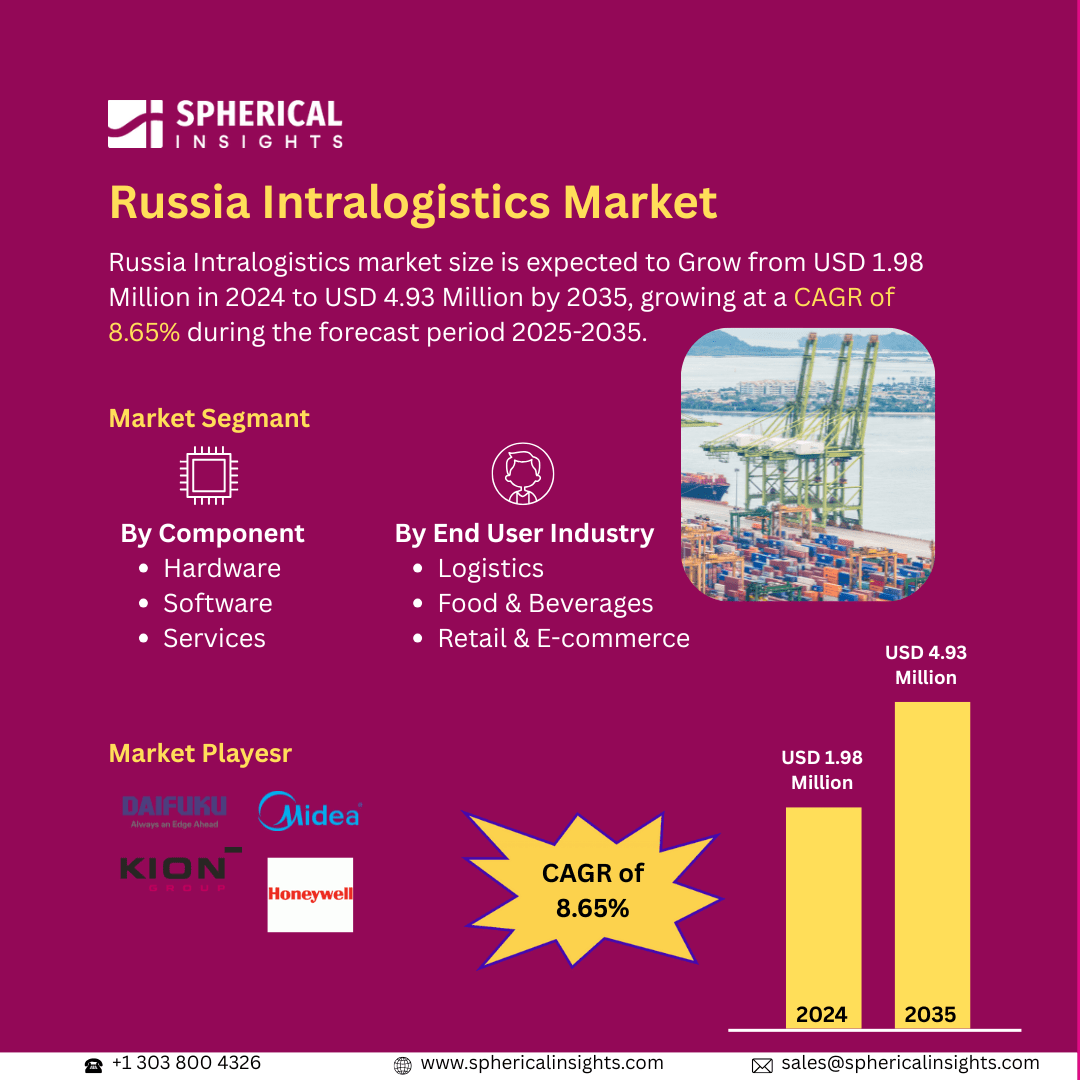Global Inbound Logistics Market Size to Exceed USD 2,989.27 Billion by 2033
According to a research report published by Spherical Insights & Consulting, The Global Inbound Logistics Market Size Expected to Grow from USD 1,489.37 Billion in 2023 to USD 2,989.27 Billion by 2033, at a CAGR of 7.22% during the forecast period 2023-2033.
Browse 210 market data Tables and 45 Figures spread through 190 Pages and in-depth TOC on the Global Inbound Logistics Market Size, Share, and COVID-19 Impact Analysis, By Mode of Transportation (Road, Rail, Air, and Sea), By End-Use (Retail & e-commerce, Manufacturing, Automotive, and Pharmaceuticals), and By Region (North America, Europe, Asia Pacific, Latin America, Middle East, and Africa), Analysis and Forecast 2023 – 2033
Global Inbound Logistics is the management of transportation, storage, and delivery of raw materials and supplies from suppliers to production facilities. This includes inventory control, supplier coordination, warehousing, and freight management, all aimed at making supply chain operations efficient, costs optimized, and production timely across manufacturing, retail, and healthcare industries. Moreover, the growth of the global inbound logistics market is characterized by growing globalization, increasing demand for efficient supply chain management, and advancement in digital logistics solutions. The increase in just-in-time manufacturing, e-commerce expansion, and automation in warehousing and transportation further accelerates the market's growth. Integrating AI, IoT, and blockchain for real-time tracking, along with sustainability initiatives for greener logistics solutions, enhances operational efficiency while trimming down costs, further driving market expansion. However, the global inbound logistics market suffers from the hindrances of transportation costs, chain disruptions, rising fuel prices, infrastructure constraints, and the complexity of managing multi-tier supplier networks.
The road segment accounted for the largest share of the global Inbound Logistics market in 2023 and is anticipated to grow at a significant CAGR during the forecast period.
On the basis of the mode of transportation, the global inbound logistics market is divided into road, rail, air, and sea. Among these, the road segment accounted for the largest share of the global Inbound Logistics market in 2023 and is anticipated to grow at a significant CAGR during the forecast period. This is due to its flexibility, cost-effectiveness, and ability to provide last-mile connectivity, growing e-commerce, expanding supply chains, and improved road infrastructure further drive its growth. Rising demand for just-in-time deliveries and regional trade agreements also contribute to its expansion.
The retail & e-commerce segment accounted for a substantial share of the global Inbound Logistics market in 2023 and is anticipated to grow at a rapid pace during the projected period.
On the basis of end-use, the global Inbound Logistics market is divided into retail & e-commerce, manufacturing, automotive, and pharmaceuticals. Among these, the retail & e-commerce segment accounted for a substantial share of the global Inbound Logistics market in 2023 and is anticipated to grow at a rapid pace during the projected period. This is due to surging online shopping, rising consumer demand for fast deliveries, and technological advancements in supply chain management. Growth is driven by expanding digital marketplaces, efficient inventory management, and increasing investments in automation and last-mile delivery solutions.
Asia Pacific is projected to hold the largest share of the global inbound logistics market over the projected period.
Asia Pacific is projected to hold the largest share of the global inbound logistics market over the projected period. This is due to its strong manufacturing base, an expanding industrial sector, and dominance in automotive, electronics, and textile production, countries like China, India, and Japan drive demand with growing e-commerce, infrastructure development, and government initiatives to enhance logistics efficiency and supply chain optimization.
North America is expected to grow at the fastest CAGR growth of the global inbound logistics market during the projected period. This is due to highly developed supply chains, a leading manufacturing sector, and growing e-commerce, the site has become competitive in the eyes of automotive companies, aerospace concerns, and pharmaceuticals because of technological and innovation-based supply chain logistics advancement in automation solutions and real-time tracking.
Company Profiling
Major vendors in the global Inbound Logistics market are CEVA Logistics, Kuehne+Nagel, XPO, Inc., DB SCHENKER, United Parcel Service of America, Inc., FedEx, Ryder System, Inc., Expeditors International of Washington, Inc., Nippon Express, GEODIS., and Others.
Key Target Audience
- Market Players
- Investors
- End-users
- Government Authorities
- Consulting and Research Firm
- Venture capitalists
- Value-Added Resellers (VARs)
Recent Development
- In September 2024, Delhivery recently announced a strategic partnership with Teamglobal Logistics to enhance ocean freight services, where both inbound and outbound logistics have been given utmost importance. Under this partnership, Delhivery will expand its Less than Container Load (LCL) service to over 120 countries, while Teamglobal will benefit from the extensive inland logistics network of Delhivery that covers over 18,700 pin codes in India.
Market Segment
This study forecasts revenue at global, regional, and country levels from 2023 to 2033. Spherical Insights has segmented the global inbound logistics market based on the below-mentioned segments:
Global Inbound Logistics Market, By Mode of Transportation
Global Inbound Logistics Market, By End Use
- Retail & e-commerce
- Manufacturing
- Automotive
- Pharmaceuticals
Global Inbound Logistics Market, By Regional
- North America
- Europe
- Germany
- UK
- France
- Italy
- Spain
- Russia
- Rest of Europe
- Asia Pacific
- China
- Japan
- India
- South Korea
- Australia
- Rest of Asia Pacific
- South America
- Brazil
- Argentina
- Rest of South America
- Middle East & Africa
- UAE
- Saudi Arabia
- Qatar
- South Africa
- Rest of the Middle East & Africa



